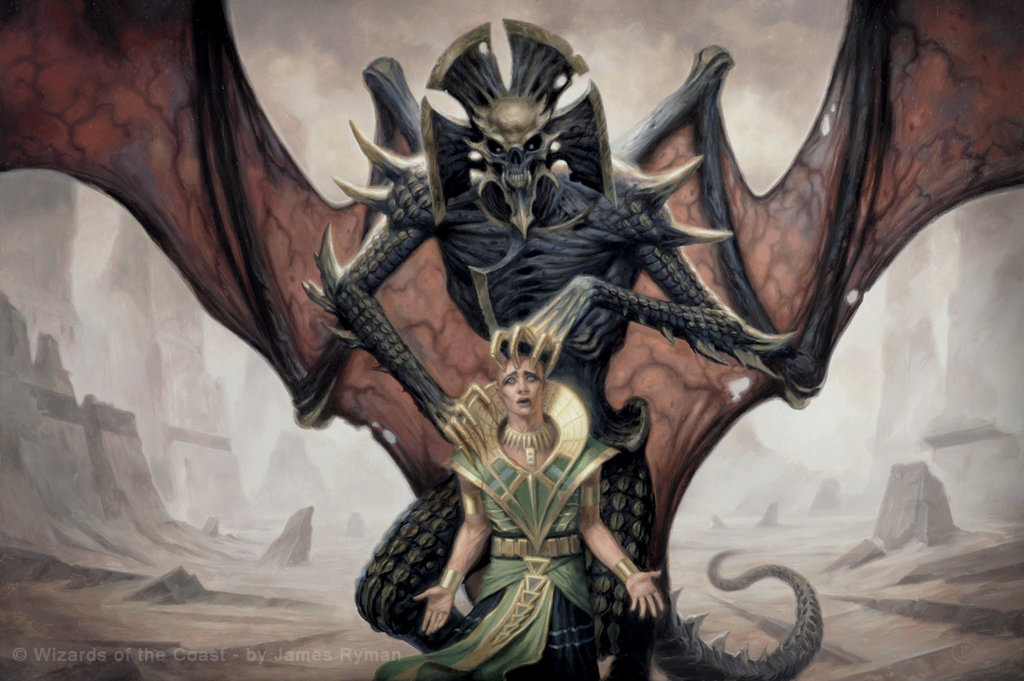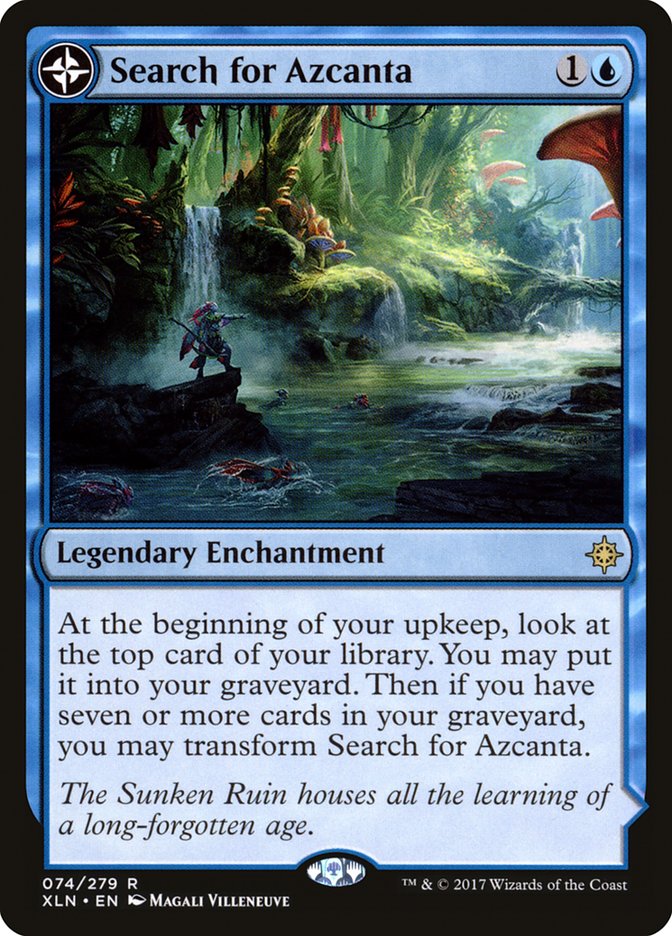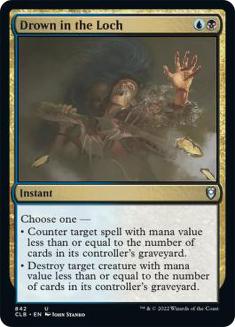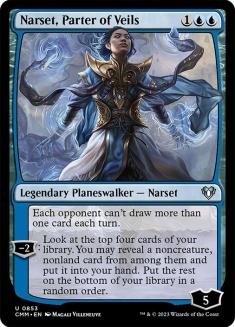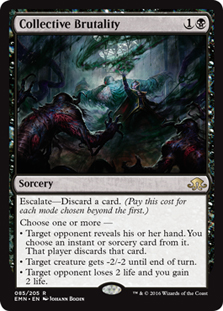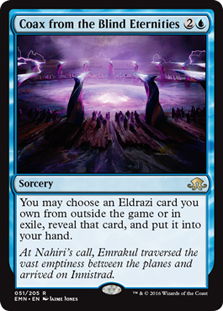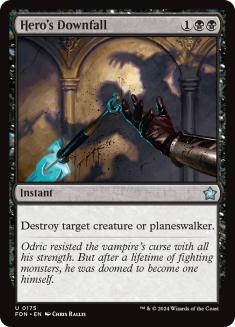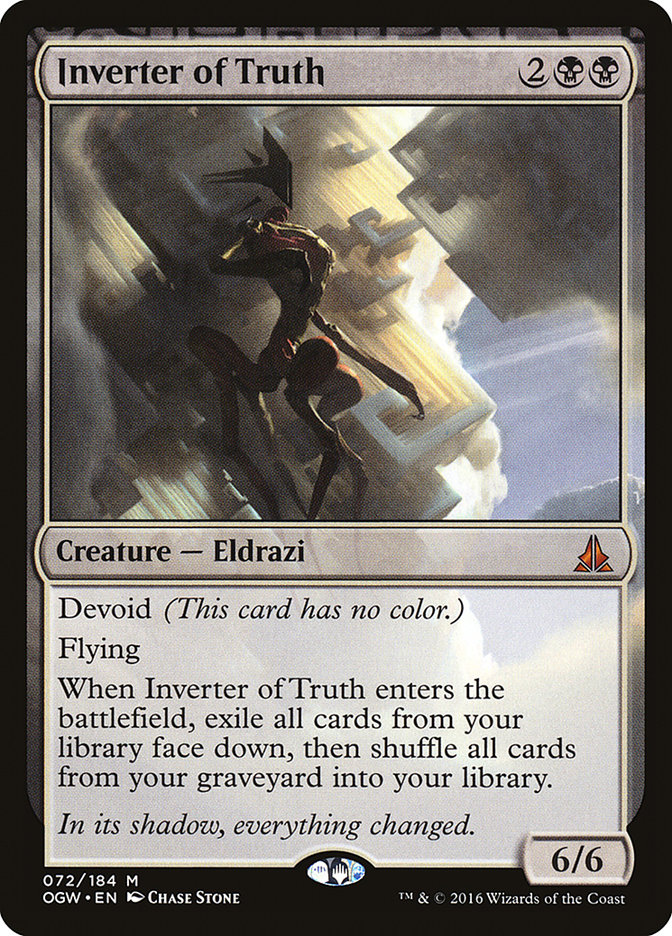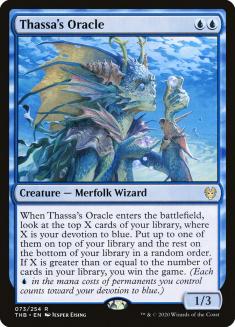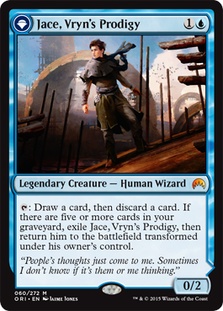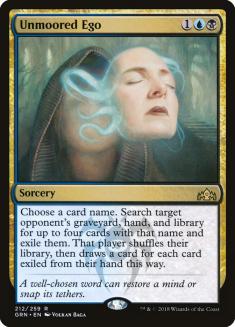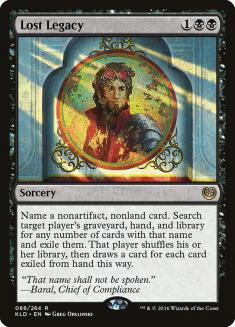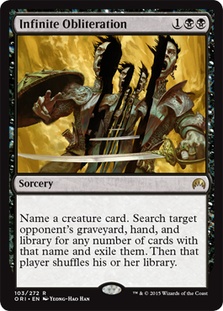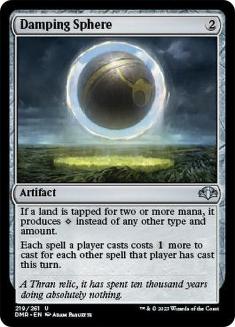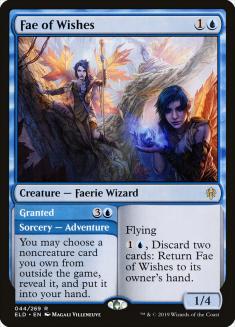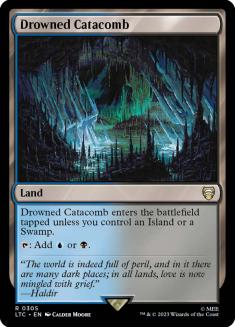There are two good decks in Pioneer, and then there is everything else.
This is an article about how to play one of the two good decks against the other one.
You already know them both. Dimir Inverter and Lotus Breach. Or should I say Splinter Twin and Ironworks. The interactive control-combo deck and the non-interactive mana-rich engine deck. Historically speaking, these are two of the best general strategies in Magic, and we get to watch them collide in the newest Constructed format. What a joy!
I prefer to take the side of the Thoughtseize deck, because the combo deck with a rich suite of interaction should theoretically be favored against the combo deck with none. But a number of comical errors have left most Dimir Inverter players hopelessly behind in the matchup. Let’s fix that once and for all.
Creatures (7)
Planeswalkers (6)
Lands (20)
Spells (27)

It’s just like last time, with Four-Color Saheeli. The first builds flooded. They played too many cyclers and lands, and wound up with fistfuls of mana and no action spells in the late-game. If you want to play this deck and be able to properly transform into a control role, you need to change this and pick up some real inevitability. Narset was a great start to churn to more power cards, and Search for Azcanta is the next step.
You can cut a land. Running 24 won’t kill you. You can replace it with either two Omen of the Sea or two Search for Azcanta. I chose Search because it offers a powerful late-game effect for a small upfront cost. It also filters draws, which is important. Plus, it’s sort of like a blue Mind Stone, in that it flips into a land. There’s no shame in playing the self-contained engine card, the card that makes opponents start to sweat when it lands because they know that they no longer have any hope of inevitability in this game.
Drown in the Loch is weak to Dig Through Time, it’s true. So what? It is strong against the aggro matchups, locks out a game from topdecked burn spells, and (most importantly) offers a legitimate hard counter against Underworld Breach. The fact that people are relying on Mystical Dispute to carry them when Lotus Breach is universally flush with extra mana is comical. You can’t seriously hope to Dispute a spell past Turn 4 against Breach, can you? Just play the hard counters.
Narset laughs at Pore Over the Pages and finds you your interactive spells. It’s a busted planeswalker from 2019, which is a good enough reason to play it. Impeccable logic, I know, but sometimes you just have to play with the broken cards you’re given.
Collective Brutality covers a number of valuable angles. It’s obviously great against red, but it also covers Pack Rat in the mirror match while remaining a playable discard spell, and generally hits a card against Lotus Breach. It would not be out of the question to play more of this card, especially as a follow-up to a Thoughtseize. Your best draws against Lotus Breach involve two discard spells into a Narset into more discard and real (i.e. hard) countermagic.
Coax from the Blind Eternities is a necessary evil to protect against sideboarded-in copies of Lost Legacy from Lotus Breach. They will have access to the effect, and you don’t want to get caught with your pants down. Just play one, sideboard it in for a single Inverter of Truth, and you can safely ignore that card.
How Dimir Inverter Loses to Lotus Breach
Now, what are our fail cases? If we don’t know what our opponent is playing, we might end up keeping a hand with multiple non-interactive cards and lose. Fatal Push, Thassa’s Oracle (without an Inverter), and Hero’s Downfall all look silly, and drawing two of them is often a death sentence. Luckily this list has relatively few dead draws against Lotus Breach, and a high density of good interactive spells. This is a key difference when compared to older lists that were full of cantrips but had fewer counters and discard.
Additionally, we can lose to topdecks. Opponents can peel a card draw spell once we’ve ripped their hand up, and we still lose. It happens all the time. However, with three hard counterspells in the list as well as Narset to cut off Pore Over the Pages as an out, opponents are less likely to be able to wriggle out of a lock. This is another key difference between older versions with Censor and this one.
And of course, we can lose to Thought Distortion. That’s a tough one to beat. The best solution is to have a bunch of discard so the opponent has to topdeck the Distortion, and to try to push for the combo when possible. With Jace, Vryn’s Prodigy you have a virtual ten discard spells post-sideboard, so it won’t be hard to get three or more of them down to clear the way for an Inverter combo.
Now, let’s talk about sideboarding.
The Sideboard Plan
Out:
In:
It could wind up being correct to have one Unmoored Ego, Infinite Obliteration, Lost Legacy, or Damping Sphere in the sideboard specifically to close the door on this matchup, but an additional Collective Brutality or Drown in the Loch over an Essence Extraction seems more likely. Said card would replace the last Thassa’s Oracle, which is not particularly impressive in a matchup where the 1/3 body doesn’t get much in the way of blocking duty.
Each of the three Extraction effects has a benefit and a drawback. Unmoored Ego can hit Lotus Field on the play and win the game immediately, plus it can hit other cards like Hidden Strings and Underworld Breach. Lost Legacy can’t hit Lotus Field but also can’t be hit with Mystical Dispute, and Infinite Obliteration can only hit Fae of Wishes but doesn’t allow the opponent to draw a card if one is in their hand. Damping Sphere is a powerful card as well, but only functions in this matchup. The extraction effects are also relevant against the mirror match, since most mirror matches don’t have any Coax from the Blind Eternities.
If you really want to smash the Breach matchup as Inverter, the solution is to put two or three copies of Damping Sphere in your sideboard. You can risk it and cut the Coax from the Blind Eternities or trim a Liliana, the Last Hope if you want. It’s also not the craziest idea to just cut Mystical Dispute, especially with how obvious it is now when you telegraph that you have a Dispute in your hand.
General Play Tips
Watch out for their Tome Scour! If you go for the Inverter combo across multiple turns, you might wind up getting stuck if you don’t have a big enough graveyard to flip back into your library to beat a Tome Scour. Going for the Turn 5 kill is sometimes your best option if you’ve got nothing else going on and need to try to fast-track the win, but if the opponent has a Fae of Wishes, they can steal the win right back.
There is the Huey Jensen / Seth Manfield list with only one Thought Distortion, and the Brent Vos / Pascal Vieren list with three. If you see Expansion // Explosion in the first game, it’s more likely to be the Huey list. Thassa’s Oracle means more Thought Distortions. Obviously different people can make their lists how they want, and there isn’t much you can do about Thought Distortion other than hitting them hard with discard before the Distortion can come down. Again, as the Breach decks fight back, it may become necessary to play more lock pieces like Damping Sphere to nail down the matchup.
A very savvy opponent may cast a Fae of Wishes on Turn 2 to protect it from discard spells until such a time as they are ready to combo off. This is also useful against Extraction effects. This is more of a tip for them, not you, but be aware that it is something they may choose to do.
Your discard spells should prioritize Sylvan Scrying and Satyr Wayfinder to keep them from getting a Lotus Field. Once they have a Lotus Field, your discard spells should prioritize action spells. This can mean multiple things:
- Fae of Wishes and Underworld Breach are their combo pieces to take. Fae of Wishes gets Tome Scour, which executes the deterministic combo. Underworld Breach is the only way for them to actually combo you, so it is perfectly reasonable to just take that by default.
- If they show you two Underworld Breach, it may be wiser to take a setup piece like Fae of Wishes or Strategic Planning to keep them from finding their additional pieces.
- Take their Pore Over the Pages if you don’t have a Narset or a counterspell available to address that card and the opponent is not about to combo off. Pore is a really powerful effect in this deck!
For example, if my opponent shows me a hand of Pore, Breach, and a few lands, I’m more likely to take Pore than Breach (unless they have two Lotus Fields among their lands, at which point you have to take Breach or you will die to it.)
Drown in the Loch is one of your best cards, and you should not burn it lightly. It counters Underworld Breach no matter how late in the game you are, which is critical. If you can make your opponent discard multiple Breaches and then counter the one they find with Fae of Wishes, you win.
But watch out! They will often Fae of Wishes for Thought Distortion if you hem and haw over countering Granted. Then you really will be between a rock and a hard place.
Your discard spells are great, but they topdeck fairly well out of a barrage of discard. Fortunately, with Dig, Narset, Jace, and Search for Azcanta, you have a lot of ways to keep the cards churning, but draw-go will likely not end well for you. If you have a big graveyard, a hellbent opponent, and a hand of two Inverters and more discard, it may make sense to just cast some big creatures and put them on a short clock.
Mulligan Decisions
In the post-sideboard games, you’ll want to look for hands that can hit with two early interactive spells and put the screws to the opponent with a Jace, Vryn’s Prodigy or Narset, Parter of Veils (or Search for Azcanta or Jace, Wielder of Mysteries, to a lesser extent). That means a mix of two copies of Thoughtseize, Collective Brutality, Thought Erasure, and Drown in the Loch. A Dig Through Time is always incredible.
Traps include hands with only one interactive spell and multiple big Jaces / Inverters / Dig Through Time. You probably can’t afford to be too slow.
For example: Opt; Jace, Wielder of Mysteries; Dig; four lands is a mulligan.
Thoughtseize, Search for Azcanta, Drown in the Loch, three lands is a much better hand.
You have so many ways to gain cards on your opponent that it makes sense to mulligan for powerful lock pieces and early disruption.
Hands that are land-light are not quite as bad, as you have tons of cheap interaction spells and eventually will be able to cast Dig Through Time to fix everything.
For example, two lands, two Thoughtseize, Dig Through Time, big Jace, Inverter of Truth is a keep. You’ve got a lot of very live draws, and not many duds. You also have the combo you can just execute on Turn 5 if you draw a few lands. That’s a risk I am typically willing to take in the matchup.
Breach may fight back with more countermagic, more Dig Through Time, more Thought Distortion, and more Lost Legacy. They may even try to play some number of Brazen Borrower as an answer to Damping Sphere and a threat that puts Inverter under pressure. Fortunately, we can make it hard for them to squeeze past a healthy mix of discard, hard countermagic, velocity cards, and a two-card combo.
This arms race looks like it will end up resulting in both archetypes getting hit with bans, but in the meantime it’s great fun to perfect your weapon in a two-deck format.

